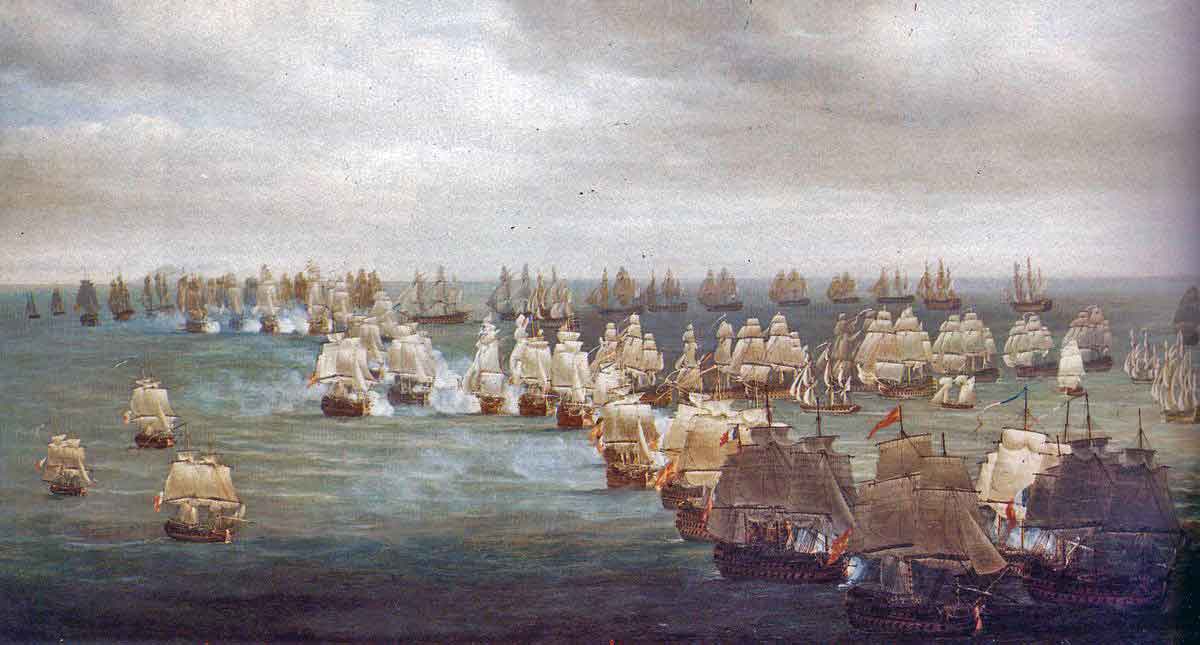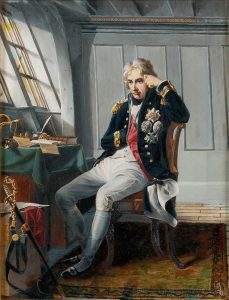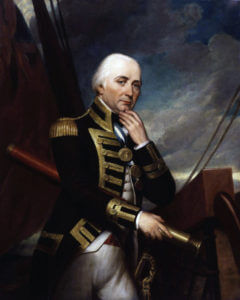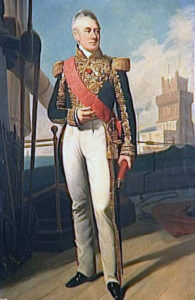The Battle of Trafalgar was an enormous naval engagement of the Napoleonic Wars. It established British naval supremacy for more than 100 years; it was fought west of Cape Trafalgar, Spain, between Cádiz and the Strait of Gibraltar. A fleet of 33 ships (18 French and 15 Spanish) under Admiral Pierre de Villeneuve fought a British fleet of 27 ships under Admiral Horatio Nelson.
The Battle of Trafalgar happened October 21, 1805. It was a naval engagement of the Napoleonic Wars, which established British naval supremacy for more than 100 years; a common understanding of it all. The remark here is about some questions having been raised about the futility of this story. Anyway, It was fought west of Cape Trafalgar, Spain, between Cádiz and the Strait of Gibraltar. A fleet of 33 ships where 18 were French and 15 Spanish and they were led by Admiral Pierre de Villeneuve. Villeneuve fought a British fleet of 27 ships under the command of Admiral Horatio Nelson.
The battle
At the end of September 1805, Villeneuve got his orders to leave Cádiz and land his troops at Naples in order to support a French campaign in southern Italy. On October 19–20 his fleet slipped out of Cádiz, hoping to get into the Mediterranean Sea without giving battle, but Nelson caught him off Cape Trafalgar on October 21.

Villeneuve formed a single line heading north, and Nelson formed two squadrons and attacked Villeneuve’s line at right angles from the west. By noon the larger squadron, led by Admiral Cuthbert Collingwood in the Royal Sovereign, had engaged the rear (south) 16 ships of the French-Spanish line. At 11:50 AM Nelson, in the Victory, signaled his famous message: –“England expects that every man will do his duty”. His 12 ships squadron then attacked the van and centre of Villeneuve’s line, which included Villeneuve in the ship named Bucentaure. The majority of Nelson’s squadron broke through and shattered Villeneuve’s lines in the pell-mell battle. Six of the leading French and Spanish ships, under Admiral Pierre Dumanoir by the way, were ignored in the first attack, and about 3:30 PM these ships were able to turn about to aid those behind. But Dumanoir’s weak counterattack failed and was driven off. Collingwood completed the destruction of the rear, and the battle ended about 5:00 PM. Villeneuve himself was captured, and his fleet lost 19 or 20 ships surrendered to the British along with – would you know: 14,000 men. of whom half were in fact prisoners of war. Nelson was mortally wounded by a sniper, but when he died at 4:30 PM he was certain of his complete victory. About 1,500 British seamen were killed or wounded, but no British ships were lost. Trafalgar shattered forever Napoleon’s plans to invade England, and established Britain as the dominant world naval power for a century to come.
The battle in the artsSee how J W Turner depicted it Click here to see the article
This endeavour aside, Admiral Lord Nelson’s hardest fought battle though, was against the Danish Fleet and the Danish Capital City of Copenhagen four years back in time, on 2nd April 1801. Of course we have this covered too. Do your read up by clicking here,
If you're interessted in learning about all the British battles, you can click here and end up at Britishbattles.com. And since you're here, we've got a fact box for this as well:
Facts about the battle of Trafalgar
War: Napoleonic
Date of the Battle of Trafalgar: 21st October 1805
Place of the Battle of Trafalgar: At Cape Trafalgar off the South-Western coast of Spain, south of Cadiz.
Combatants at the Battle of Trafalgar: The British Royal Navy against the Fleets of France and Spain.
Commanders at the Battle of Trafalgar: Admiral Viscount Lord Nelson and Vice Admiral Collingwood against Admiral Villeneuve of France and Admirals d’Aliva and Cisternas of Spain.
Size of the fleets at the Battle of Trafalgar: 32 British ships (25 ships of the line, 4 Frigates and smaller craft), 23 French ships and 15 Spanish ships (33 ships of the line, 7 Frigates and smaller craft). 4,000 troops, including riflemen from the Tyrol, were posted in small detachments through the French and Spanish Fleets.
Winner of the Battle of Trafalgar: The Royal Navy.
|
British Ships at the Battle of Trafalgar (name of captain and number of guns): Admiral Lord Nelson’s Division: 
HMS Victory (Flagship of Admiral Lord Nelson: Captain Thomas Hardy, 104), Temeraire (Captain Eliab Harvey, 98), Neptune (Captain Thomas Fremantle, 98), Conqueror (Captain Israel Pellew, 74), Leviathan (Captain Henry Bayntun, 74), Ajax (Lieutenant John Pilford, 74), Orion (Captain Edward Codrington, 74), Agamemnon (Captain Sir Edward Bury, 64), Minotaur (Captain Charles Mansfield, 74), Spartiate (Captain Sir Francis Laforey, 74), Euryalus (Captain Henry Blackwood, 36), Britannia (Flagship of Rear Admiral Lord Northesk: Captain Charles Bullen, 100), Africa (Captain Henry Digby, 64), Naiad (Captain Thomas Dundas, 38), Phoebe (Captain Thomas Capel, 36), Entreprenante (Lieutenant Robert Young, 10), Sirius (Captain William Prowse, 36) and Pickle (Lieutenant John La Penotière, 6). |

Vice Admiral Collingwood’s Division: HMS Royal Sovereign (Flagship of Vice Admiral Cuthbert Collingwood: Captain Edward Rotheram, 100), Belleisle (Captain William Hargood, 74), Mars (Captain George Duff, 74), Tonnant (Captain Charles Tyler, 80), Bellerophon (Captain John Cooke, 74), Colossus (Captain James Morris, 74), Achilles (Captain Richard King, 74), Polyphemus (Captain Robert Redmill, 64), Revenge (Captain Robert Moorsom, 74), Swiftsure (Captain William Rutherford, 74), Defiance (Captain Philip Durham, 74), Thunderer (Lieutenant John Stockham, 74), Prince of Wales (Captain Richard Grindall, 98), Dreadnought (Captain John Conn, 98) and Defence (Captain George Hope, 74). |
|
French Ships at the Battle of Trafalgar (name of captain and number of guns): 
Bucentaure (Flagship of Vice Admiral Villeneuve: Captain Magendie, 80), Formidable (Flagship of Rear Admiral Le Pelley: Captain Letellier, 80), Scipion (Captain Berrenger, 74), Intrépide (Captain Infernet, 74), Cornélie (Captain Martineng, 40), Duguay Truin (Captain Touffet, 74), Mont Blanc (Captain Lavillegris, 74), Heros (Commander Poulain, 74), Hortense (Captain Lamellerie, 40), Neptune (Commodore Maistral, 80), Redoutable (Captain Lucas, 74), Indomptable (Captain Hubert, 80), Fougueux (Captain Baudoin, 74), Pluton (Captain Cosmao-Kerjulien, 74), Aigle (Captain Gourrège, 74), Swiftsure (Captain L’Hospitalier, 74), Argonaute (Captain Épron-Desjardins, 74), Berwick (Captain de Camas, 74), Hermione (Captain Mahé, 40), Thémis (Captain Jugan, 40), Achille (Captain Deniéport, 74) Rhin (Captain Chesneau, 40), Furet (Lieutenant Dumay, 18) and Argus (Lieutenant Taillard, 16). |
|
Spanish Ships at the Battle of Trafalgar (name of captain and number of guns): 
Santa Anna (Flagship of Vice Admiral de Alava: Captain de Gardoqui, 112), Santissima Trinidad (Flagship of Rear Admiral de Cisneros: Captain de Uriarte, 136), Neptuno (Captain Flores, 80), Rayo (Captain MacDonnell, 100), San Augustin (Captain Cagigal, 74), San Francisco d’Assisi (Captain Flores, 74), San Leandro (Captain Quevedo, 64), San Justo (Captain Gaston, 74), Monarca (Captain Argumosa, 74), San Ildefenso (Captain Vargas, 74), Algeciras (Flagship of Rear Admiral Magon: Commander Tourneur, 74), Bahama (Commodore Galiano, 74), Montanes (Captain Bustamente, 74), San Juan Nepomucano (Commodore Elorza, 74), Argonauta (Captain Pareja, 80) and Prince de Asturias (Flagship of Admiral Gravina: Commodore Hore, 112). |
See the ships involved Random pictures from this event in history Extra: The evolution of warships
 About this site
About this site